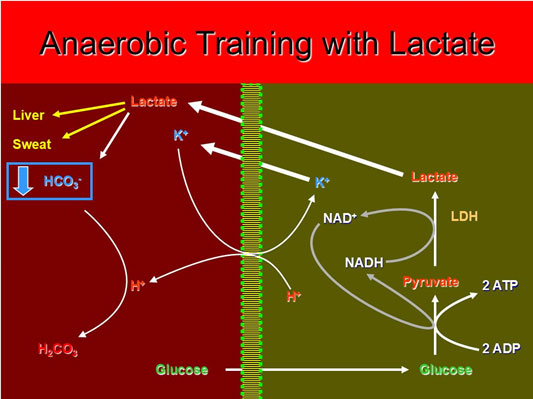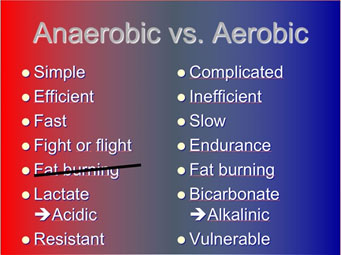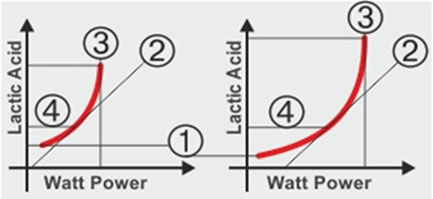Mito-Pro2™ – an innovative and effective energy and fat burning enhancer
The function of mitochondria is becoming increasingly the center of attraction in the medical world, with a realization that all bodily functions are dependent on a sufficient supply of our energy currency called adenosine triphosphate or ATP.
If the mitochondria do not adequately produce life-giving energy, then the system will deteriorate and eventually die. This enables us to simplify disease prevention and antiaging, as well as treating chronic illness on the basis of mitochondrial enhancement. Today’s magic word is ‘Mitoceuticals’ which encompasses all substances on which the mitochondria rely on for proper function. Knowledge on mitochondrial physiology is increasing rapidly, especially in contrast to the application of these mitoceuticals that are emerging on the market.
The magnitude of impact on wellbeing to be expected is reflected by the National Institute of Health (USA) which has inaugurated itself a department for Mitochondrial Medicine. Taking into consideration that mitochondria are ubiquitous in our cells, treatment thereof is almost without boundaries. Science is exploring the effects of our mitochondria in cardiovascular disease, diabetes, pain control, macular degeneration, neurological disorders, autism, tinnitus, dermatology, periodontology, gastrointestinal disease as well as in oncology and multiple sclerosis.
A look at physiology
At the beginning of our evolution cells had to rely on anaerobic metabolism to survive and multiply. Yet they remained individual cells in an aqueous environment. This enabled them to excrete the lactic acid into their surroundings, preventing death from self-made acidosis. The symbiosis with mitochondria delivered the solution to this bottleneck of evolution, using the lactic acid as their own fuel for further synthesis of ATP, degrading lactic acid to carbon dioxide and water. Simultaneously mitochondria mediated further differentiation of their host cells, transforming them from low differentiated tumor behavior to highly differentiated slow-dividing cells.
Depending on the requirements there are three pathways of ATP delivery:
1. Creatine phosphate energy delivery
2. Lactic acid energy delivery
3. Oxidative phosphorylation energy delivery
These systems fulfil specific duties, whereas #2 and #3 are biochemically completely independent from each other.
Pathway #1
This pathway can also be identified as anaerobic energy delivery without production of lactic acid. Creatine phosphate stores ATP for immediate delivery and is responsible for enabling us to perform short and intensive bouts of exercise up to about 30 seconds, such as weight-lifting but also sudden actions as a golf or a tennis swing. Energy loaded creatine phosphate is stored in the muscles where it is instantly converted to ATP upon demand. Interestingly enough, during this type of exertion, breathing is not necessary, (these athletes hold their breath), demonstrating its independence of oxygen. Thereafter the regeneration of ATP occurs again by mitochondrial energy delivery during recovery. Interestingly the mitochondrial ATP restauration is dependent on the Proton Motoric Force of the inner membrane. The breakdown of ATP to ADP delivers these acidic protons meeting the requirements for energy recuperation. The storage of the highly negative ATP is then limited to the amount of positive magnesium and creatine guaranteeing ionic balance in the muscle. Therefore the efficiency of this energy pathway will be dependent on sufficient supplementation of these molecules.
Pathway #2
This anaerobic source of energy will produce lactic acid (figure 1) and covers our needs for intensive workout lasting from 30 seconds up to 6 minutes. An example would be a 400-800m sprint. This is where Glucose/ Glycogen is directly converted to energy which must be delivered quickly and efficiently but will exhaust within time. The accumulating lactate will be excreted as sweat or recycled in the liver back to glucose (via the Cori Cycle) or used in the muscle to restore pyruvate, which will in turn enter the mitochondria and lead to ATP production by oxidative phosphorylation. Redundant lactate generally leaves the cell, builds up in the blood stream and will displace bicarbonate resulting in a physiological metabolic acidosis. Any means of increasing the blood buffer capacity such as the production of bicarbonate will enable to cope with higher levels of lactic acid. In the symbiosis of the mitochondria with our cell surroundings it is exactly the aerobic phosphorylation which delivers bicarbonate at the end of the process.
Besides mitochondrial support, bicarbonate supplementation has also been shown to facilitate anaerobic performance, the recommended dosage being 300mg/KG/day. Unfortunately one must be aware of the potential side-effects such as nausea, diarrhea and bloating.

Figure 1: How lactic acid accumulates under the influence anaerobic training.
Pathway #3
The slowest, but most efficient method of energy delivery is by-far, the oxidative phosphorylation, (also described as the aerobic pathway without production of lactic acid). This pathway metabolizes pyruvate through the mitochondria within the Krebs Cycle, Electron Transfer Chain and Proton Motoric Force to deliver ATP, water and CO2. CO2 is an extremely lipophilic molecule that leaves the cell like a rocket and enters the erythrocyte where it becomes hydrated, promoted by the zinc dependent enzyme carboanhydrase. This results in carbonic acid which does what any acid will do in a pH surrounding of 7.0, release its proton in the cytoplasma of the red blood cell. This acidification in turn will enhance the discharge of oxygen from hemoglobin, necessary for the oxidative phosphorylation in the mitochondria. The bicarbonate gets excreted into the blood plasma by an antiport transportation system exchanging intracellular bicarbonate by chloride, which in turn further increases the acidity in the erythrocyte enhancing the mitochondrial oxygen supply.
The consequent increase of plasma bicarbonate enhances its alkalinity in contrast to the lactate build up in pathway #2. This is an explanation why lactic acid energy transformation can be enhanced by mitochondrial enforcement and vice versa. On the other hand, this also explains why bicarbonate supplementation will have no positive effect in an aerobic discipline. Optimal function is more so dependent on other micronutrients. These include Coenzyme Q10, magnesium, iron, manganese, vitamins B1, 2, 3, lipoic acid, pantothenic acid and zinc.
Medical impact
Our health and wellbeing are completely dependent on available energy. If our energy does not meet the needs of our body, we die. This is, for example, the case when seniors decease from a common flu. The power to overcome the disease exploits energy that is necessary to maintain bodily functions. Taking this into consideration, any process to improve energy over time will contribute to antiaging and longevity. Antiaging does not only mean remaining healthy, it also implements our ability to withstand and recuperate from disease, which is a normal process at any age, yet becomes more challenging as we grow older.
Improving mitochondrial energy delivery will not only support the elderly. In today’s world we must function up to our limits, physically as well as mentally, thus we will be grateful for any energy available from our mitochondria.

But not only is sufficient energy a permanent demand of modern life, we also are increasingly encountering the problem of weight control. For the lives of many, fat burning is center of attraction.
Astonishingly we can produce fat as an energy reserve fairly easily without any contribution made by mitochondria. On the other hand, we are fully dependent on mitochondrial oxidative phosphorylation when it comes to burning fat. Therefore more energy harnessed from mitochondrial activity will automatically assist in burning fat and help us lose or prevent us from putting on weight. Not only that, the more fat we burn instead of sugar, the less appetite we develop after exercise.
The more sugar we burn, the hungrier we get. So a real workout at the gym above the fat burning threshold will not assist in weight loss! Should you return from exercising and only experience thirst but no real hunger, then your fat burning was successful. Any form of mitochondrial enhancement will widen the functional area of fat burning which is reflected in the so-called right shift of the lactic acid tolerance testing diagram.
Burning sugar to lactic acid, with a low but long-term output of energy is also the root of sugar craving. It has been quite astonishing how mitochondrial support was able to abolish sugar craving. In this sense, it also has its value in the management of diabetes. Having said this, any form of metabolic syndrome must also address active detoxification and anti-oxidation. Regeneration of antioxidants is energy dependent. Mitochondria deliver electrons in the form of NADH or NADPH. These enable, for example, oxidized vitamin C and glutathione to restore back to their reduced form. Glutathione is our most important detoxifier assisting in the excretion of heavy metals, viruses and free radicals, all essential in maintaining our health.
A very exciting new aspect of mitochondrial action is based on research by Professor Thomas Seyfried in his book, ‘Cancer as a Metabolic Disease.’ He was able to demonstrate mitochondria as being the “ultimate tumor suppressor”. Tumor cells differ from normal cells, not in the amount of energy, but in the energy source. In other words, any mitochondropathy is a pivotal requirement for tumorgenesis. Mitochondrial disease leads to a process called aerobic fermentation, delivering energy anaerobically, yet it seems as if the mitochondria were involved. But the fact is that oxygen is only being utilized in heat production uncoupled to ATP synthesis. Therefore the warmer the tumor, the faster the growth and the poorer the prognosis, any backward change in mitochondrial respiration will signal the nucleus to express genes to compensate the energy loss and to therefore enhance anaerobic energy production by pathway #2.
These are the genes known as the oncogenes that are actually the genes necessary for aerobic fermentation. According to Professor Seyfried; “any process or supplementation that can enhance mitochondrial respiratory energy efficiency will be effective in reducing the risk of cancer”.
Comparison anaerobic/ aerobic metabolism

Figure 2: A comparison between the anaerobic and aerobic energy production systems.
Influence on lactic tolerance by Mito-Pro2™
1) Lower resting lactate
2) Shift of the lactate threshold to the right (as shown in figure 3)
3) Prolonged aerobic phase and thus also higher anaerobic tolerance as well as maximum cumulative efficiency
4) Aerobic fat burning zone extended

Figure 3: The influence of Mito-Pro2™ (right) on improving the lactic acid threshold under exercise.
Ingredients (each 5g Mito-Pro2™ dose provides)
• L-Carnitine (720mg):
It enables the uptake of fatty acids into mitochondria.
• L-Arginine (500mg):
This is a source of high-energy nitrogen-phosphate compounds, precursor to nitric oxide, important for vasodilation (»Viagra Effect»), blood thinning, and thus for the blood supply as well as for power. It’s needed for detoxification of ammonia. Lowers blood pressure, stimulates the immune system. It promotes the release of growth hormones, it also a creatine precursor.
• Creatine (720mg):
This stores energy in the muscle and allows immediate ATP release. Promotes muscle development, increases muscle strength while improving physical and mental performance (learning, memory and stress tolerance). It improves recovery time after exercise. Creatine acts as a cellular buffer on H+ ions that are produced from accumulating lactate. Creatine helps maintain optimal pH levels within muscle reducing the effects of fatigue. Free creatine within muscle cells has the ability to draw water into the cell which induces protein synthesis.[2]
• Coenzyme Q 10 (30 mg):
It is essential for mitochondria in the conversion of sugar and fat into energy. It is simultaneously important as antioxidant in mitochondria and often deficient when taking cholesterol-lowering drugs (statins).
• Alpha lipoic acid (100mg):
Important for the transportation of sugar into the mitochondria, it can also be used in the body to regenerate antioxidants such as vitamin C, E, CoQ10 and Glutathione. It aslo provides for heavy metal detox, especially from depots in fat and nervous system.
• Magnesium (66mg):
Important for the function of ATP, each ATP must be bound to magnesium. It is good at preventing muscle cramps.
• Manganese (3.3mg):
Essential in activation of enzymes for the transportation of sugar into the mitochondria and is an immune enhancer.
• Zinc (8 mg):
A co-factor for more than 200 chemical reactions, its key role is in acid-base household (de-acidification after sport), sugar, fat and protein metabolism, in hormone synthesis and memory, as well as in the immune system.
• Pantothenic acid (13.3mg):
This is an important agent for mitochondrial metabolism in assembling and disassembling carbohydrates, fats, amino acids. It’s also essential for the synthesis of cholesterol, which is needed for the formation of anabolic steroid hormones.
• Riboflavin (6.6mg) and niacin / vitamin B3 (6.6mg):
They are necessary for the coenzyme NADH, which participates in the conversion of glucose to pyruvate and further to lactic acid, (anaerobic energy production). Furthermore, B3 is a natural cholesterol lowering vitamin.
• Thiamine (6.6mg):
This coenzyme of Pyruvate dehydrogenase transfers sugar into the mitochondria.
Why does Mito-Pro2™ NOT contain iron?
Iron is very poorly absorbed in the intestine and is responsible for frequent uncomfortable side effects such as nausea and constipation. Taking this into account, we have decided to prioritize tolerance and acceptability. On the other hand, Mito-Pro2 is the perfect add on to any iron infusion treatment.
Mito-Pro2™ impact on energy metabolism
• Lower resting lactic acid
• Protracted release of lactic acid in sports due to mitochondrial enhancement
• Prolonged aerobic phase and thus also higher anaerobic tolerance as well as maximum cumulative efficiency
• Aerobic fat burning zone extended
Main application of Mito-Pro2™
• Improvement of short and long term physical performance (6) and recovery in sports and everyday activities
• Chronic fatigue (first rule out or treat iron deficiency and target ferritin with 100-150ug/L)
• Supports stress tolerance (burn-out), concentration and learning capacity
• Senior performance enhancement
• Energy optimizer for vegetarians
• Assists any weight loss program by optimizing fat-burning and reducing appetite
• Convalescence after disease and injury or before and after surgery
• Muscle disease and MS
• Assists biological cancer therapy by supporting aerobic metabolism
Testimonials
• “After 30 Minutes of aerobics I used to be exhausted. Now I am still going strong after the whole 60 minute session!”
• “I used to lose my concentration after 1 hour of computer work. Now I can continue for 5 hours. Just amazing!”
• “Evenings I had craving for chocolate. This has completely disappeared!”
• “I am more attentive in school.”
• “I feel much better. People are giving me compliments on how my looks have improved. I am no longer depressed and as a sales women more successful. And I am even starting to get interested in men again…”
• A lady of 85 years: “I feel like a new born!”
• A medical Professor: “I have the impression that it really works. Taking Mito-Pro2 daily I lost 2 Kg during Christmas. In the past I used to gain that much!”
References
1) Introduction of the International Mitochondrial Medicine Association
2) http://pages.uoregon.edu/mdillon1/Energy%20Metabolism/Energy%20Metabolism.html
3) Lehninger AL, Nelson DL, Cox MM: Lehninger Biochemie. Springer.
4) Foss ML, Keteyian S., The Physiological Basis of Exercise & Sport: 6th Edition, 1998
5) Dempsey RL, Michael F. Mazzone, Linda N. Meurer: Does oral creatine supplementation improve strength? A meta-analyss. J Fam Pract 2002; 51: 945-952.
6) Shay KP et al. Alpha-lipoic acid as a dietary supplement: Molecular mechanisms and therapeutic potential. Biochimica et Biophysica Acta, 2009;1790:1149-1160.
7) The creatine kinase system and pleiotropic effects of creatine, Theo Wallimann, Malgorzata Tokarska-Schlattner, Uwe Schlattner, December 2010, Springerlink.com
8) www.lactate.com
9) Clinical trials, John van Limburg Stirum, MD., Seegarten Klinik, Kilchberg-Zurich, Switzerland, 2009 – 2014
10) Cancer as a metabolic disease. Seyfried TN, Shelton LM. Nutr Metab (Lond). 2010 Jan 27;7:7. doi: 10.1186/1743-7075-7-7
11) www.euro-fer.net